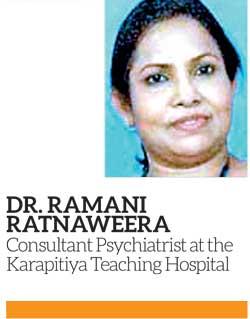06 Mar 2020 - {{hitsCtrl.values.hits}}

 Confusion struck in Sweden back in 1973 when the victims of a bank siege in Stockholm started to defend their captors’ actions. Four of the bank employees were taken into hostage and held at gunpoint for six days by two men. However, after being freed from the terrifying ordeal, the victims appeared to have developed positive feelings towards their captors and would even try to vindicate their behaviour.
Confusion struck in Sweden back in 1973 when the victims of a bank siege in Stockholm started to defend their captors’ actions. Four of the bank employees were taken into hostage and held at gunpoint for six days by two men. However, after being freed from the terrifying ordeal, the victims appeared to have developed positive feelings towards their captors and would even try to vindicate their behaviour.
With certain other similar cases occurring over time, where people would not agree to testify against their captors in court, and in some cases, even join them after life-threatening incidents, psychiatrists named this unusual occurrence as ‘Stockholm syndrome’.
The Health Capsule spoke to Doctor Ramani Ratnaweera, Consultant Psychiatrist at the Karapitiya Teaching Hospital, in order to shed light on the consequences of this unusual behaviour that is developed by people who have faced such situations. It might be helpful to understand and identify such types of behaviour, if faced by a loved one.
Psychological condition
Stockholm syndrome is a psychological condition that causes victims of abuse to create unusual bonds with their abusers. These bonds are mostly positive attachments that are developed over the period of captivity.
The result is usually the opposite to a normal response that would be expected from a victim of abuse.
Dr Ratnaweera explained that the victims will develop a positive relationship with the captor or abuser and that they will try to rationalize their actions.
“It’s a syndrome that has been described after the bank robbery in Sweden where people were kept hostage,” she said.
Causes and effects
Stockholm syndrome is commonly associated with high profile kidnapping and hostage situations. However, aside from the famous type of crime cases, it is possible for people to develop this psychological condition due to the various types of trauma that they may face in life.

Dr Ratnaweera explained that it could be developed in any relationship that involves abuse. However, the victims will tend to sympathize, rationalize and agree with the abuser. She further stated that people in concentration camps, prisoners of war, abused children, incest survivors and victims of domestic violence (which is common in the country) are the population most likely to get affected by this condition. Dr Ratnaweera explained that the creation of bonds and attachments with the captor or abuser is actually a survival strategy for the victim.
“It is sometimes helpful for the victims to survive and cope well with the situation rather than showing fear. If you can be in par with them, the chances of survival increase,” she explained.
Dr Ratnaweera also stated that it is believed to be a necessary tactic of psychological and physical defense against controlling relationships. She explained that the victims will refuse to co-operate with the government, the doctors and the police and might not even try to escape from the situation.
“The victims will always believe in the good of the perpetrator and sometimes it may look as if they are trying to manipulate the captor in order to survive,” she explained. “They will also become helpless and think that they have to join the abuser to stay unharmed”.
Dr Ratnaweera explained that this happens normally when the victims are held captive or abused for a long period of time. Some people will develop post-traumatic stress disorder and get depression as well as negative thoughts, startling responses and flashbacks which will cause them to avoid similar situations. People affected may also develop insomnia.

Symptoms
The symptoms of the syndrome involve the above-mentioned characteristic changes and the victim’s positive bond with the captor. Development of negative feelings toward police, authority and other figures who show interest in helping them get away from their captors is another odd yet obvious symptom.
They may also show signs of having been ‘brainwashed’ to carry the same ideas as their captors or abusers and behave in a very bizarre manner, out of their character and even try to forgive the perpetrator.
Diagnosis and treatment
Psychiatrists diagnose this condition by talking with the patients and getting to know their story. The patients will also show the obvious symptoms such as anxiety and depression. The doctors will build a good therapeutic relationship with the patient and provide them with the necessary mental and psychological help.
Treatment involves psychotherapy and counseling where the doctor will spend time talking about the situation with the patient.
According to Dr Ratnaweera, if severe anxiety, depression and post traumatic stress disorder symptoms are identified, the patients will be treated with medication. However, she stated that Stockholm syndrome is not a physical illness that can be cured through medication alone.
“Psychiatrists have identified this condition as Stockholm syndrome for their convenience due to the similar characteristics in the case,” Dr Ratnaweera explained. “Counseling and cognitive therapy can be provided to help them accept reality and to facilitate proper thinking for the victims to return to their normal life”.
The time period of receiving treatment depends on the duration of exposure to the unfortunate situation. Therefore, the process of treatment may differ from one person to another. It will depend on how much the patients will take in and how co-operative they are. It will also depend on how strong their psychological condition is at that time.
30 Dec 2024 1 hours ago
30 Dec 2024 2 hours ago
30 Dec 2024 3 hours ago
30 Dec 2024 6 hours ago
30 Dec 2024 7 hours ago